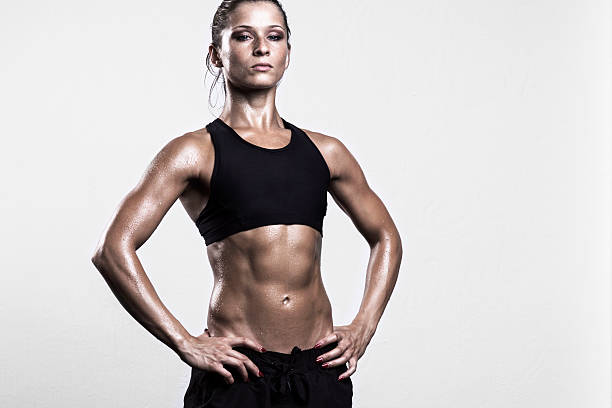
Are you interested in getting stronger and building muscle? One way to do that is through a 4-day split workout, upper and lower. This workout plan focuses on working different muscle groups on different days to maximize your training.
Introduction to the 4-Day Split Workout Upper Lower
Are you looking for a new workout routine that can help you achieve your fitness goals? Try the 4-day split workout upper lower. This type of workout is perfect for people who want to focus on different muscle groups daily. In this full body workout too, you will do exercises targeting your upper body one day and your lower body the next. That way, you give your muscles enough time to recover and grow while working out daily.
Benefits of a 4-Day Split Workout
The 4-day split workout has many benefits:
- It allows you to target your muscles more effectively. You can focus on each muscle group and give it enough attention to help it grow and become stronger.
- It gives you enough time to rest between workouts. Your muscles need time to recover; if you work out every day, you might not give them enough time to heal. With the 4-day split workout, you can work out daily while giving your muscles ample time to recover.
- This type of workout can save you a lot of time.
You can focus on specific muscle groups and finish your workout faster.
Understanding Upper and Lower Body Workouts
In a 4-day split workout upper two lower body workouts, you will alternate between workouts that focus on your upper body and workouts that focus on your lower body. But what exactly are upper and lower body workouts? Upper body workouts target your chest, shoulders, back, and triceps. These exercises can include bench presses, shoulder presses, pull-ups, and bicep curls. Lower body workouts, on the other hand, target your legs, glutes, and calves. Exercises for this can include squats, lunges, leg presses, and calf raises.
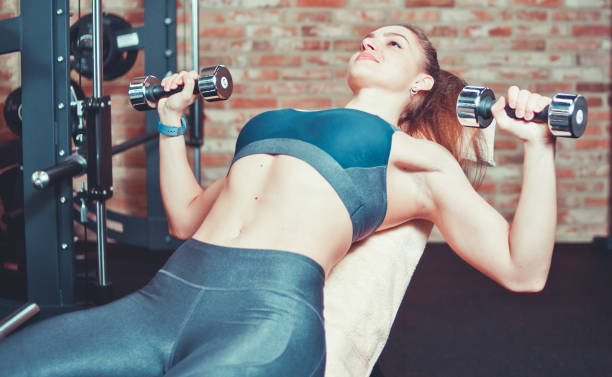
Incline Dumbbell Press: Perfect for Building Chest Muscles
One exercise that can help you build your chest muscles is the incline dumbbell press. This exercise targets your upper chest and helps you achieve a more defined look. Here are some tips on how to do it correctly:
1. Lie flat on a bench with a slight incline.
2. Hold two dumbbells above your chest, with your palms facing forward.
3. Lower the dumbbells slowly until they reach your chest.
4. Push the dumbbells back up until your arms are fully extended.
Common Mistakes and How to Avoid Them
One common mistake people make when doing the incline dumbbell press is arching their back. This can put unnecessary strain on your lower back and reduce the effectiveness of the exercise. Another mistake is using too much weight. Using the right amount of weight that challenges you but doesn’t put undue stress on your muscles or joints is essential.
The Benefits of Multiple Training Frequencies in a 4-Day Split
One of the benefits of the 4-day split workout upper lower is that you get to train each muscle group multiple times a week. This can help you improve your strength, endurance, and muscle size. But how do you adapt your training frequency to this type of workout? It’s essential to balance both intensity and volume. You want to challenge your muscles enough to make them grow but not so much that you risk injuring them. By finding the right balance, you can achieve your fitness goals and have a successful workout.
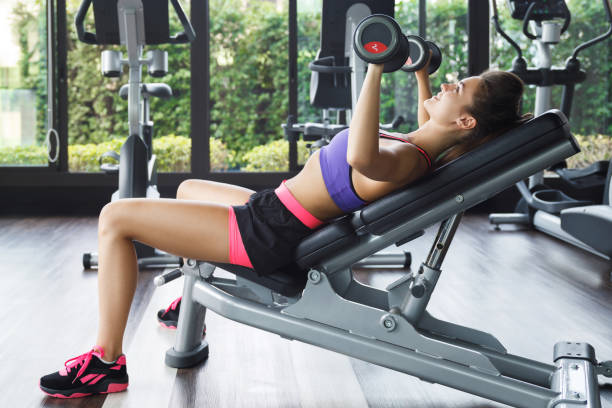
Dumbbell Bench Press: A Key Exercise in Your Upper Body Routine
The dumbbell bench press is another exercise that can help you build your upper body. This exercise targets your chest, shoulders, and triceps. Here’s how to do it correctly:
1. Lie flat on a bench with a slight incline.
2. Hold two dumbbells above your chest, with your palms facing forward.
3. Lower the dumbbells slowly until they reach your chest.
4. Push the dumbbells back up until your arms are fully extended.
Variations of the Dumbbell Bench Press
If you want to add some variety to your workout, you can try different dumbbell bench press variations. For instance, you can try an incline or decline dumbbell bench press to target different areas of your chest. You can also experiment with different weights and reps to help you achieve your fitness goals.
Comparing 2, 3, 4, 5, and 6-Day Upper Lower Splits: Pros and Cons.
Several different upper-lower splits are available, ranging from 2 days to 6 days split routines. But how do you choose the right split for you? Factors to consider when choosing include your fitness goals, recovery ability, and lifestyle. For instance, if you have a busy schedule, a 4-day split workout upper lower might be more manageable for you than a 6-day full body split routine. Choosing a split that fits your lifestyle and helps you achieve your fitness goals is essential.
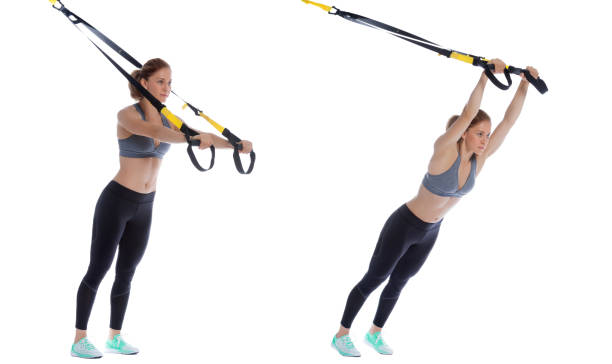
Wide Grip Front Lat Pulldown: Strengthening Your Back Muscles
Have you ever looked in the mirror and noticed your back muscles? Probably not, but working out your back muscles to help with posture and overall strength is important. The wide-grip front lat pulldown exercise is great for targeting those back muscles.
The Importance of Back Training
Working out your back muscles is important for several reasons:
- Your back muscles help you maintain good posture.
- Having strong back muscles can prevent injuries and improve your athletic performance.
- A strong back looks cool!
Tips for Proper Wide Grip Front Lat Pulldown Form
When performing the wide grip front lat pulldown, it’s essential to have proper form. Here are a few tips to keep in mind:
1. Grab the bar with a wide grip, slightly wider than shoulder-width apart.
2. Sit down at the machine and adjust the knee pad to rest snugly against your thighs.
3. Keep your back straight and pull the bar down to your chest while squeezing your shoulder blades together.
4. Slowly release the bar back up to the starting position.
Mastering the Incline Dumbbell Press: 3 Sets x 10 Reps
The incline dumbbell press is a great exercise for targeting your chest muscles. And with a little work, you can master this exercise and see some serious gains!
Progression Strategies for Incline Dumbbell Press
When it comes to making progress with the incline dumbbell press, you can use a few strategies, like increasing the weight or doing more reps. Here are some other tips to help you progress:
1. Take shorter rest periods in between sets.
2. Slow down the movement and focus on each rep.
3. Try doing drop sets, where you start with a heavier weight and then drop down to a lighter weight for more reps.
Incorporating Incline Dumbbell Press into Your Routine
Incorporating the incline dumbbell press into your upper body workout routine is important. Try doing 3 sets of 10 reps with a weight that challenges you but allows you to maintain proper form.
Determining the Ideal Training Frequency for an Upper Lower Split
Regarding the 4-day training split and workout upper lower, it’s crucial to determine the ideal training frequency for your body. Here are some factors to consider:
1. Your age and fitness level.
2. How much time do you have to commit to working out?
3. How quickly your body recovers from workouts.
Personalizing Your Training Frequency
Everyone’s body is different, so it’s important to personalize your training frequency based on your needs. For example, you may want to do an upper-lower split twice a week if you’re starting out. But if you’re more advanced, you may prefer to do it three or four times a week.
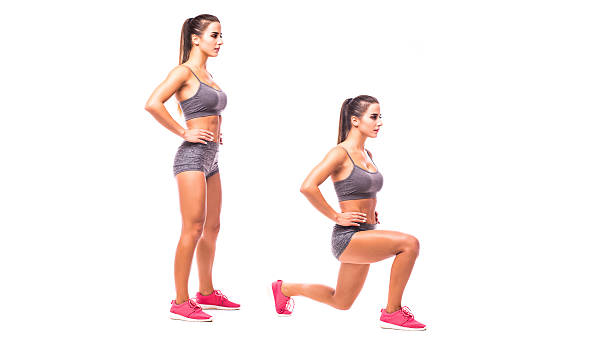
How to Progress on an Upper-Lower Workout Split
To see progress with your upper-lower workout split, tracking your progress and adjusting your workouts as necessary is essential.
Tracking Your Progress
Keeping a workout log is a great way to track your progress. Write down how much weight you lifted, the number of reps you did, and how you feel after each workout.
Adjusting Your Workouts for Continuous Improvement
If you’re not seeing progress after a few weeks, adjust your workouts. Try increasing the weight or doing more reps. Or, switch up your exercises to target different muscle groups.
Lying EZ Bar Triceps Extension: Developing Your Triceps
The lying EZ bar triceps extension is a great exercise for developing your triceps muscle group. Let’s take a look at the proper form and some alternative exercises.
Proper Form for Lying EZ Bar Triceps Extension
To perform the lying EZ bar triceps extension, follow these steps:
1. Lie flat on a bench, holding an EZ bar with both hands.
2. Extend your arms up straight above your chest.
3. Slowly lower the bar behind your head, bending your elbows.
4. Slowly bring the bar back up to the starting position.
Alternative Triceps Exercises
If you prefer something other than the lying EZ bar triceps extension, there are other exercises you can try, including tricep dips, kickbacks, and rope pushdowns.
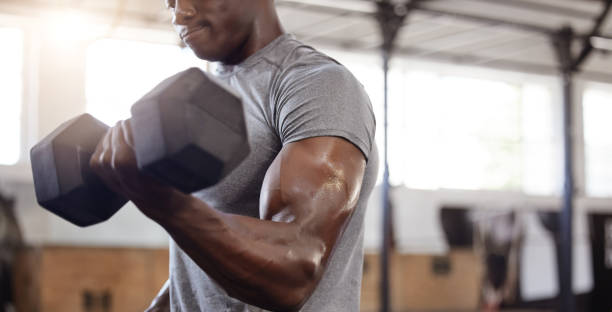
Incline Dumbbell Curl: Effective Bicep Exercise in Your Routine
If you want to build bigger biceps, incline dumbbell curls can be a great addition to your routine. This exercise targets the long head of the biceps, which means you can achieve a fuller and more defined look to your arms. Here are some tips to get started:
Technique Tips for Incline Dumbbell Curl:
1. Start by sitting on an incline bench with your feet firmly planted on the ground.
2. Hold a dumbbell in each hand with your palms facing forward.
3. Slowly curl the weights towards your shoulders while keeping your elbows in place.
4. Squeeze your biceps at the top of the movement before slowly lowering the weights back to the starting position.
5. Avoid using momentum and focus on contracting your biceps throughout the movement.
Other Bicep Exercises to Consider:
If you want to mix up your bicep workout, here are some other exercises to try:
– Hammer curls
– Preacher curls
– Concentration curls
Romanian Deadlift: 4 Sets x 10 Reps for Stronger Hamstrings
Working on your lower body is as important as your upper body when building overall strength and achieving your goals. Romanian deadlifts are an effective exercise to help strengthen your hamstrings.
How to Perform the Romanian Deadlift Safely:
1. Start with your feet hip-width apart and hold a barbell in front of your thighs with an overhand grip.
2. Keep your back straight and engage your core as you hinge at the hips to lower the weight toward the ground.
3. Lower the barbell until you feel a stretch in your hamstrings.
4. Drive your hips forward as you lift the barbell back to the starting position.
5. Keep the weight close to your body during the movement to avoid straining your lower back.
Benefits of Romanian Deadlifts:
– Improved hamstring and glute strength
– Better posture and stability
– Reduced risk of lower body injuries
Barbell Row: 4 Sets x 10 Reps for a Solid Back
The barbell row is an effective exercise to target your back muscles, including your lats, traps, and rhomboids. Here’s how to perform it:
Correct Form for Barbell Rows:
1. Start by holding a barbell with an overhand grip and your hands slightly wider than shoulder-width apart.
2. Stand with your feet shoulder-width apart and hinge at the hips until your torso is nearly parallel to the ground.
3. Keep your back straight and engage your core as you lift the barbell toward your chest.
4. Squeeze your shoulder blades together at the top of the movement before slowly lowering the weight back to the starting position.
5. Avoid using momentum and focus on contracting your back muscles throughout the movement.
Different Barbell Row Variations:
If you want to switch up your back workout, here are some other variations to try:
– Underhand grip barbell rows
– T-bar rows
– Single-arm dumbbell rows
Understanding the Optimal Number of Exercises in Each Rep Range
Now that you have some great exercises to add to your upper-lower split routine, it’s essential to understand the optimal number of exercises in each rep range. You’ll focus on different rep ranges depending on your goals.
Balancing Strength and Hypertrophy:
You’ll want to focus on rep ranges between 6-12 reps per set to build muscle mass. However, to build strength, you’ll want to focus on heavier weights and lower reps.
Tailoring Your Rep Ranges to Your Goals:
It’s beneficial to incorporate a mix of rep ranges during your workouts to balance your goals and see results. For example, you could perform heavier compound lifts in the lower rep range (4-6 reps per set) and then add accessory exercises in the hypertrophy range (8-12 reps per set) to achieve muscle growth.
The Advantages of Focusing on Fewer Muscle Groups in an Upper-Lower Split
While trying to hit every muscle group in every workout is tempting, focusing on fewer muscle groups in your upper-lower split routine can be more beneficial for your progress. Here are some advantages to consider:
Improved Recovery and Performance:
Focusing on only a few muscle groups per workout allows them to recover properly, reducing the risk of overtraining and injury. Plus, you increase your overall performance and energy levels by spreading out your workouts.
Ensuring Balanced Muscle Development:
You can ensure balanced muscle development throughout your full body training, by prioritizing different muscle groups on different days. This can help you achieve better overall strength and aesthetic goals.
First, we have the squat: 5 Sets x 5 Reps for Powerful Legs.
This exercise is excellent for developing strong legs. Our goal is to perform 5 sets of 5 reps. This means you’ll do the squat five times, and for each set, you’ll do 5 reps.
To get the most out of your squat, you need to use proper technique. Firstly, stand with your feet shoulder-width apart and your toes pointing slightly outward. Next, push your hips back and bend your knees, keeping your back straight. Push through your heels to stand back up once your thighs are parallel to the ground.
It’s important to avoid these common squat mistakes: leaning too far forward, letting your knees collapse inwards, and not going low enough. If you find yourself making any of these mistakes, don’t worry! There are ways to fix them and maximize the effectiveness of your squat.
Next up is the leg extension.
This exercise explicitly targets your quadriceps (the muscles on the front of your thigh) and can help improve your overall leg strength. When performing leg extensions, make sure to use the proper form. Sit in the machine with your legs straight and your ankles secured beneath the padded bar. Lift the weight by straightening your legs, then slowly lower the weight back down.
If you don’t have access to a leg extension machine, don’t worry! Plenty of leg extension alternatives exist, such as lunges or step-ups.
Customizing your upper-lower training plan.
Consider what areas you want to improve and what equipment you can access. Then, use these tips to create a personalized plan:
1. Start with compound exercises (like the squat and bench press) that simultaneously work for multiple muscle groups.
2. Add isolation exercises (like bicep curls and tricep extensions) to target specific areas.
3. Incorporate enough rest time between workouts to allow your muscles to recover.
Standing Calf Raise: Developing Your Calves
Finally, we have the standing calf raise. This exercise is fantastic for developing your calves, the muscles on the back of your lower leg. To perform a standing calf raise, stand with your toes on an elevated surface (like a step) and your heels hanging off the edge. Slowly raise yourself onto your tiptoes, then lower yourself back down.
It’s important to use proper techniques when doing this exercise. Avoid bouncing or jerking movements and, instead, focus on controlled movements.
Bulgarian Split Squat: A Challenging Lower Body Exercise
You can try the Bulgarian split squat if you’re up for a challenge. This exercise is similar to a regular squat, but you have one foot placed behind you on a bench or step. This exercise can help improve your balance and coordination and strengthen your legs.
We hope you learned something new and exciting about the 4-day split workout upper lower! Always use proper form and modify the workouts to fit your needs. Happy exercising!
Creating Your 4-Day Upper Lower Split Workout Plan
When you’re creating a 4-day upper-lower body split workout plan, the first thing you’ll need to do is decide which exercises you want to do for each muscle group. For example, make bench presses, dumbbell rows, and push-ups on your upper body days and squats, lunges, and deadlifts on your lower body days.
Structuring Your Weekly Workouts
Once you’ve decided which exercises you want to do, you’ll need to structure your workouts for the next training week. With a 4-day upper-lower split workout plan, you’ll alternate between upper-body and lower-body workouts, taking rest days in between. For example, you could do an upper body workout on Monday, a lower body workout on Tuesday, rest on Wednesday, an upper body workout on Thursday, a lower body workout on Friday, and then rest on Saturday and Sunday.
Sample 4-Day Upper Lower Split Workout Plan
Here’s an example of what a 4-day upper-lower split workout plan might look like:
Monday (Upper Body):
-Bench press (4 sets of 8-12 reps)
-Dumbbell rows (4 sets of 8-12 reps)
-Lateral raises (3 sets of 10-15 reps)
-Tricep pushdowns (3 sets of 10-15 reps)
Tuesday (Lower Body):
-Squats (4 sets of 8-12 reps)
-Lunges (3 sets of 10-12 reps per leg)
-Deadlifts (3 sets of 10-12 reps)
-Calf raises (3 sets of 15-20 reps)
Thursday (Upper Body):
-Pull-ups (4 sets of 8-12 reps)
-Shoulder press (4 sets of 8-12 reps)
-Incline dumbbell press (3 sets of 10-12 reps)
-Bicep curls (3 sets of 10-12 reps)
Friday (Lower Body):
-Leg press (4 sets of 8-12 reps)
-Hip thrusts (3 sets of 10-12 reps)
-Leg curls (3 sets of 10-12 reps)
-Seated calf raises (3 sets of 15-20 reps)
Is an Upper Lower Split Suitable for Beginners?
If you’re new to working out, you might be wondering if a 4-day upper-lower split is a good workout plan for beginners. The answer is yes! It can be a great way to ease into weightlifting and start building muscle.
Benefits of Upper Lower Splits for Beginners
When you’re just starting, it’s important to ensure you’re working different muscle groups daily. An upper-lower split allows you to focus on specific muscle groups each day, giving your muscles time to rest and recover before you work them again. Plus, various exercises can help prevent boredom and motivate you to continue your workouts.
Tips for Starting an Upper Lower Split as a Beginner
If you’re new to weightlifting, it’s essential to start slowly and gradually increasing your workout’s weight and intensity. You should start with lighter weights and fewer sets and reps, gradually increasing over time. Be bold and ask a trainer at the gym for help with proper form and technique, as this can help prevent injuries and ensure you’re getting the most out of your workout.
Rest Periods: How Long Should You Rest Between Sets?
Another critical aspect of any workout is rest periods. Rest periods are the amount of time you take between sets of exercises. Rest periods can vary depending on the muscle group you’re working with and your fitness level.
Factors Affecting Rest Periods
Factors that can affect your rest periods include the exercise you’re doing, the weight you’re lifting, and your fitness level. For example, if you’re doing heavy squats, you might need a longer rest period than doing lighter-weight lunges.
Guidelines for Determining Your Ideal Rest Duration
Generally, most people will benefit from resting for 30-90 seconds between sets. However, if you’re lifting heavier weights, you might need a more extended rest period. It’s important to listen to your body and take as much time as you need to feel rested and ready for your next set.
Lower Body Workout 1: A Comprehensive Template for Success
One of the critical components of a 4-day upper lower split workout plan is your lower body workouts. Here’s a comprehensive template you can use for your 4 day split upper lower-body workouts:
Key Exercises for Lower Body Workout 1
-Squats
-Lunges
-Deadlifts
-Leg press
Tips for Maximizing Your Lower Body Workout
-Make sure you’re using proper form and technique to prevent injuries
-Gradually increase the weight and intensity of your workouts over time
-Add in some accessory exercises, like calf raises and leg curls, to target specific muscle groups
-Don’t skip your warm-up and cool-down stretches, as these can help prevent injury and improve flexibility
An Effective Training Frequency for Most Lifters: Striking the Balance
When it comes to your 4-day upper-lower split workout plan, it’s important to find the right balance in training frequency. A good rule of thumb is to train each muscle group at least once a week but no more than twice a week. This gives your muscles enough time to rest and recover before you work them again.
Finding Your Optimal Training Frequency
If you’re unsure how often to train each muscle group, start by training each muscle group once a week and gradually increase over time. Pay attention to how your muscles feel, and your strength and endurance improve, and adjust your training frequency accordingly.
Adjusting Your Training Frequency Over Time
As you become more experienced and stronger, you should increase your training volume and frequency to continue progressing. However, it’s important to listen to your body and not overdo it. Remember, rest and recovery are just as important as your actual workouts!
So there you have it, an introduction to the 4-day upper-lower split workout plan. Whether you’re a beginner or an experienced lifter, this workout plan can be customized to fit your fitness goals and abilities. Just remember to listen to your body, use proper form and technique, and gradually increase the weight and intensity of your workouts over time. With dedication and consistency, you’ll be seeing progress and gains in no time!
The Importance of Lower Body Exercises in a 4-Day Split
Benefits of Lower Body Training:
1. Improved Balance and Stability: Your lower body supports your entire weight and keeps you balanced. You can improve your balance and stability by strengthening your lower body muscles, reducing your risk of falls and injuries.
2. Increased Strength: Your leg muscles are some of your body’s biggest and strongest muscles. When you work them out, you can build additional strength throughout your entire body.
3. Better Athletic Performance: Sports like basketball, running, and soccer rely heavily on your lower body. Strengthening your lower body can improve your speed, power, and endurance, helping you to perform better in these activities.
Essential Lower Body Exercises to Include:
1. Squats: Squats are a classic exercise that works out your lower body, including quads, glutes, and hamstrings.
2. Deadlifts: Deadlifts are another essential exercise that targets your hamstrings, glutes, and lower back muscles. They can also help improve your grip strength.
3. Lunges: Lunges are great for targeting one leg at a time, which can help improve imbalances in your lower body. They work out your quads, hamstrings, and glutes as well.
4. Leg Press: The leg press is a machine that simulates the movement of a squat and is great for building strength in your legs.

Designing Your Lower Body Workout Template
Creating a Balanced Lower Body Routine:
When designing your lower body routine, it’s important to incorporate various exercises that target all the major muscle groups. You can split your routine into different days, such as one day for squats and lunges and another day for deadlifts and leg presses. By targeting different muscle groups and changing up your exercises, you can prevent plateaus and ensure that you’re making progress.
Tips for Effective Lower Body Training:
1. Warm up properly: It’s essential to properly warm up your muscles before a lower body workout to reduce your risk of injury. You can do some dynamic stretches, such as leg swings or lunges, to get your muscles active and ready to work.
2. Use proper form: When performing lower body exercises, it’s important to use proper form to reduce your risk of injury and maximize your results. If you need help performing an exercise correctly, ask a trainer or watch instructional videos for guidance.
3. Rest and recover: Remember to give your muscles time to rest and recover between upper workout workouts. Aim to have 48 hours of rest between lower body workout days. This will allow your muscles to repair and grow stronger.
Frequently Asked:
Is upper lower 4 days a week enough?
Most upper-lower splits take 3-5 days to complete, which gives you different upper, full body workouts, or lower body movements each month.
Is A 4 day split enough to Build muscle?
Yes. The average 4-day weekly training schedule is best for beginners and intermediate lifters to build muscles. It keeps the intensity of exercise high while also providing adequate recovery between sessions, helping to lose fat, build muscles and strengthen your tummy.
Is upper Lower split good for beginners?
Beginners can do lower workouts. Many training methods are universal to training experiences. Generally speaking the differences are the weight, possibly the amount of the training session and the inclusion of additional training methods as necessary if necessary.
Which split is best for beginner gains?
Perform 1 movement in each body part for 2 to 3 sets – 8 to 12 repetitions. The full-body splits are good for beginners as well as advanced lifters such as those with restricted workout time. However, some exercise options are too narrow and you should choose an alternate split. You can train three days a week.
Can I mix upper body and lower body workout?
However, research shows that strength training should be divided up into lower or upperbody exercises as a means of increasing efficiency. Therefore, it’s important to get your clients to work on strength several times per week to achieve optimal health and fitness.
Which is better bro split or upper lower split?
Bro splits concentrate all of their workouts on one major muscle group, while upper/lower split routines target a variety of muscle groups at once. On average, research indicates that higher splits may be better for beginner lifting because it allows for the use of the muscle groups more frequently.
What is the most optimal bodybuilding split?
It’s probably the most effective exercise to split up the muscle groups and work together. This exercise involves a lot of different muscle groups. It essentially allows the maximum overlap with the exercise in terms of muscle group, training program and overall benefit.
Conclusion
In conclusion, including lower body exercises in your 4-day split workout routine can improve balance, strength, and athletic performance. By incorporating various exercises and using proper form, you can design an effective lower-body workout plan to help you achieve your fitness goals.
Leave a Reply